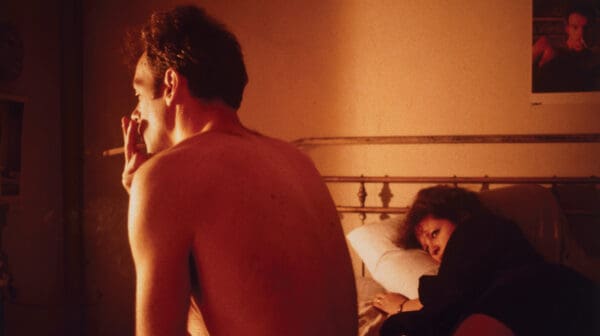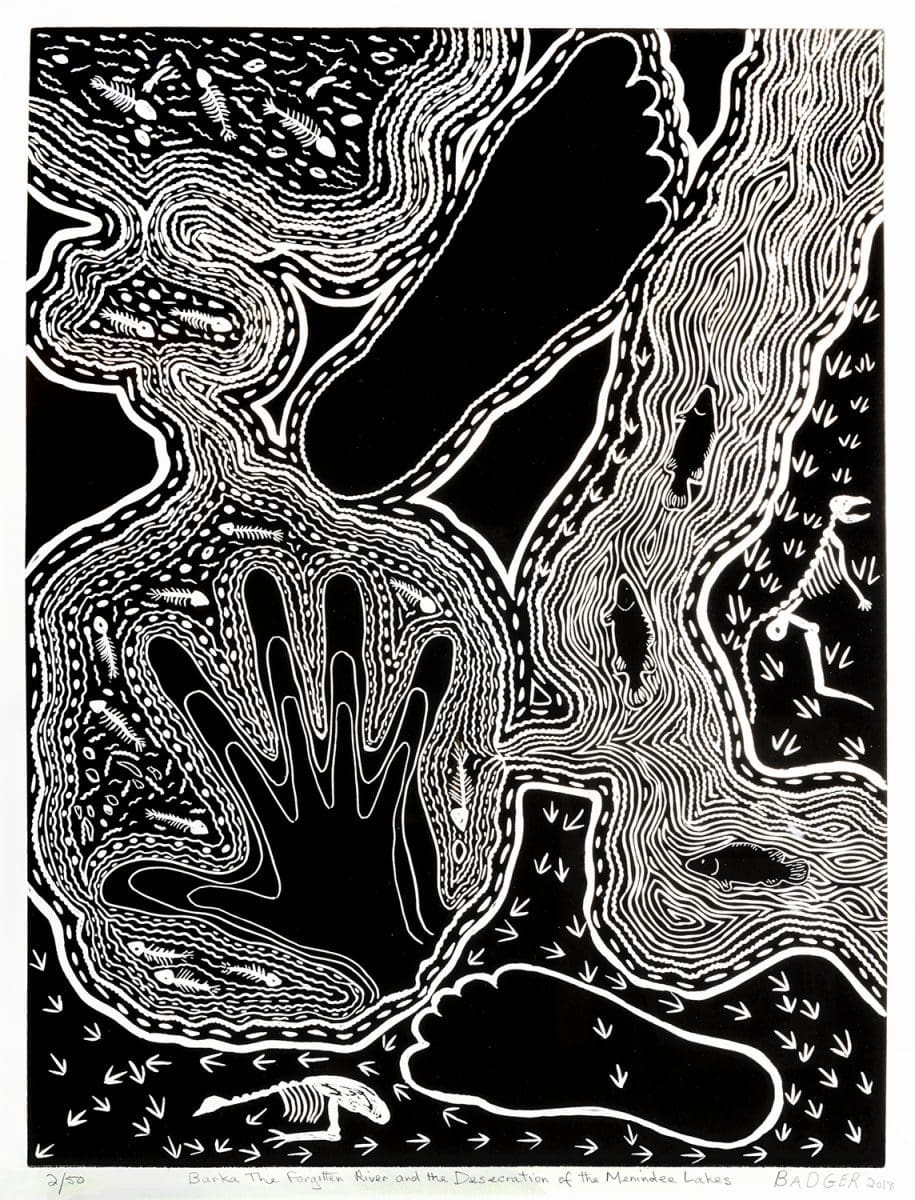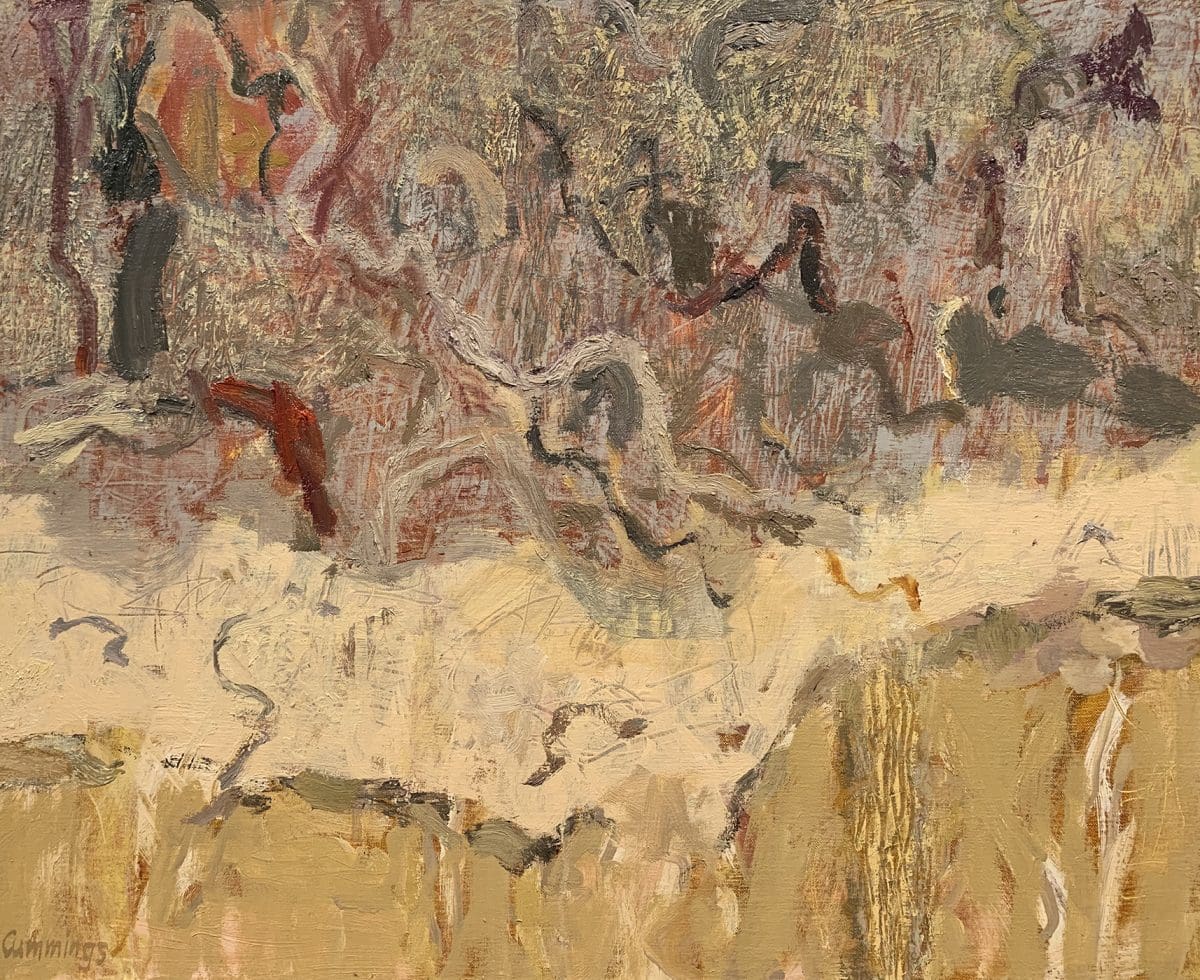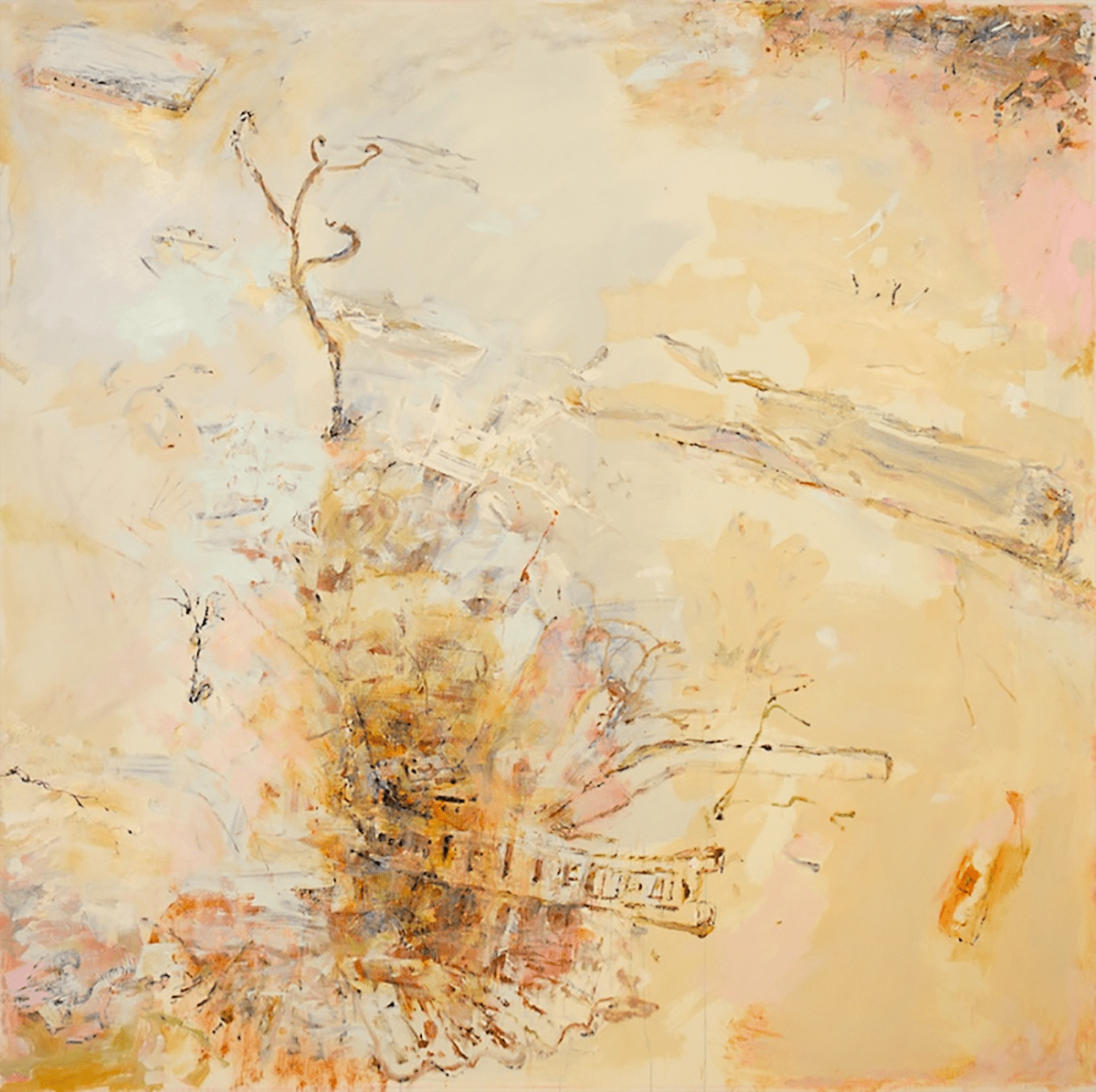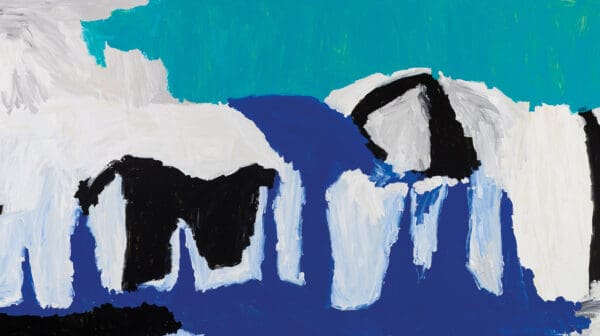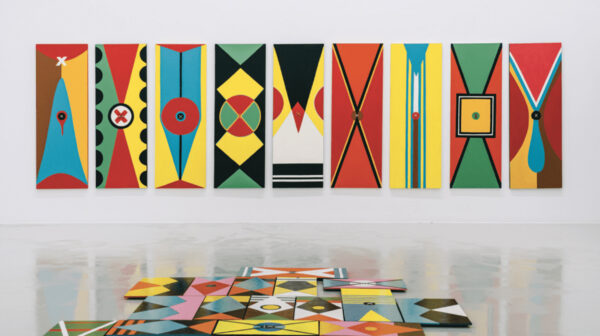Art addressing the climate crisis, as a movement, is in many ways still in its infancy. Artists and curators are grappling with important questions regarding message, modes of expression and aesthetics. For example, what is the balance between elegy or mourning for something already lost, and a hopeful spirit of protest to enforce change for the better? Is there a role for abstraction in art about climate change, or does the need for urgency and directness rule it out?
All of these questions are relevant to River on the Brink: inside the Murray-Darling Basin at SH Ervin Gallery, an exhibition that explores ecological apocalypse through the specific and localised catastrophes facing the Murray-Darling Basin. Curator Gavin Wilson has assembled 24 artists responding to the environmental corruption of this water system, with a particular emphasis on the threat to the Darling River through mismanagement, political inaction, industrial greed, drought and, of course, climate change. Artists include Badger Bates, Elisabeth Cummings, Guy Maestri, Nici Cumpston, Ben Quilty, Ruby Davies, Justine Muller, Bonita Ely and Melissa Williams-Brown.
Wilson was initially driven to organise the exhibition in the wake of the summer 2018-2019 Menindee fish kill, which triggered national outcry. “It was the catalyst that mobilised me to assemble an exhibition of substance to voice the collective disgust of the arts community to an entrenched culture of greed that has industrial interests sucking the rivers dry with its concomitant of environment and cultural degradation,” says the curator.
Some works, such as Cummings’s painting Darling River bank, 2019, do toy with abstraction, while others, such as Muller’s photograph Town in Mourning, 2015, are sombre memorials to loss.
While the climate crisis may not be the main thrust of River on the Brink, one cannot consider these pieces without becoming aware of the shadow it casts over this choked and parched river.
“While not an overt theme, the artists are acutely aware of climate change and its impact on the environment,” says Wilson. “By experiencing the works in the exhibition, audiences will be in no doubt that things have changed for the worse, while we as a nation continue to elect politicians with no circuit-breaking policy for climate action.
“Climate change acts like a vice on the Murray-Darling Basin, exacerbating an already problematic scenario, plagued by drought and the ongoing mismanagement of water resources. I prefer the term ‘global warming’ – it’s direct and visceral.”
‘Visceral’ is a word than might apply to many artworks in River on the Brink, particularly photographer Melissa Williams-Brown’s Menindee Fish Kill, 2019, a collaboration with seasoned environmental artist Bonita Ely. The image shows Ely posing to recreate John Everett Millais’s ubiquitous Pre-Raphaelite painting Ophelia, 1851-1852. But instead of being surrounded by flowers, as in the original, Ely shares putrid water with dead fish.
Williams-Brown took the photo according to Ely’s initial idea, which came directly in response to the mass fish deaths at Menindee. “I wanted to embed myself – embed us – in the fish kill as it is our neglect, our greed, our ignorance that has caused this environmental cruelty,” says Ely. “Millais’s drowning Ophelia popped into my head. Lying back, chest heaving, body sinking, her open hands are raised in helpless resignation, grief and supplication.”
The photo was shot one very early morning near to the iconic Maidens pub in Menindee, in the aftermath of the fish kill. Williams-Brown’s description of the shoot on one hand suggests a repulsive ordeal, and on the other a moment of genuine artistic electricity and collaboration.
“It was very uncomfortable for us,” says Williams-Brown, “definitely more for Bonita than myself, but it was worth it to create this work. Many fish were already decaying on the rocks and bank of the river, there were maggots everywhere and the smell is something I cannot even describe. It was just horrible.”
But, as Williams-Brown says, “Sometimes you know when you have captured something special and that feeling came a few frames in. Thankfully, Bonita didn’t need to be submerged too long during this collaboration.”
A government report into the mass fish deaths, ‘Independent Assessment of the 2018-19 Fish Deaths in the Lower Darling,’ published in February 2019, noted that the Murray-Darling had endured “exceptional climatic conditions” that were “unparalleled” in the years leading up to the event. The link between climate change and the crisis in the Murray-Darling Basin is therefore explicit.
River on the Brink qualifies, then, as an exhibition of art about climate change. As such, it combines the universal with the specific, the political with the cultural and the emotional with the scientific. And in showing in Broken Hill (in May 2020) as well as in Sydney, it also combines the regional with the metropolitan. The diversity of the artworks reflects the pervasive and indiscriminate impact of the climate crisis.
“River on the Brink delves into an environmental disaster manufactured through years of wilful mismanagement,” says Wilson. “Climate change has hovered as a constant in the background of the exhibition like the Grim Reaper, awaiting its day of reckoning.”
River on the Brink: inside the Murray-Darling Basin
SH Ervin Gallery
20 September – 3 November
